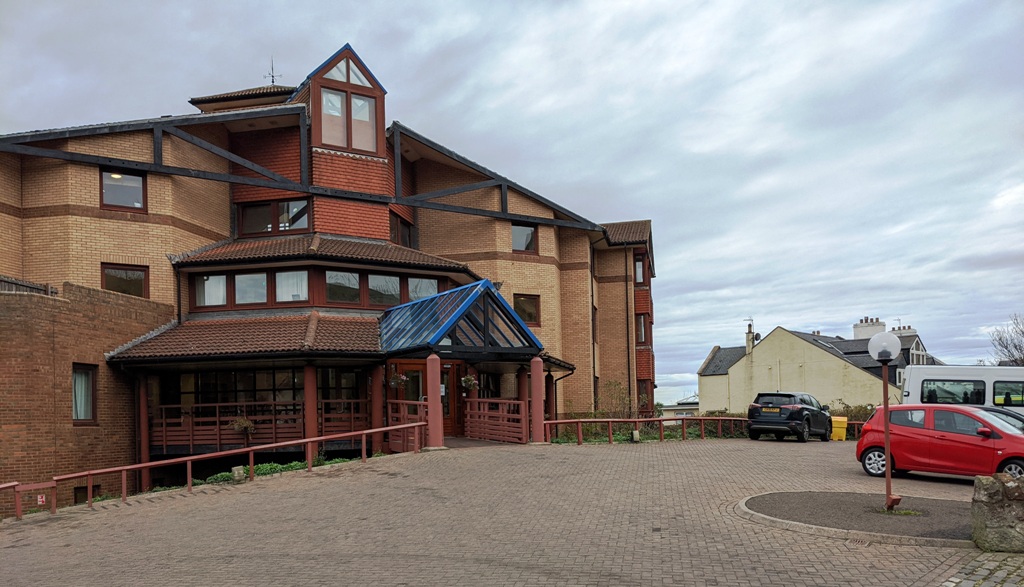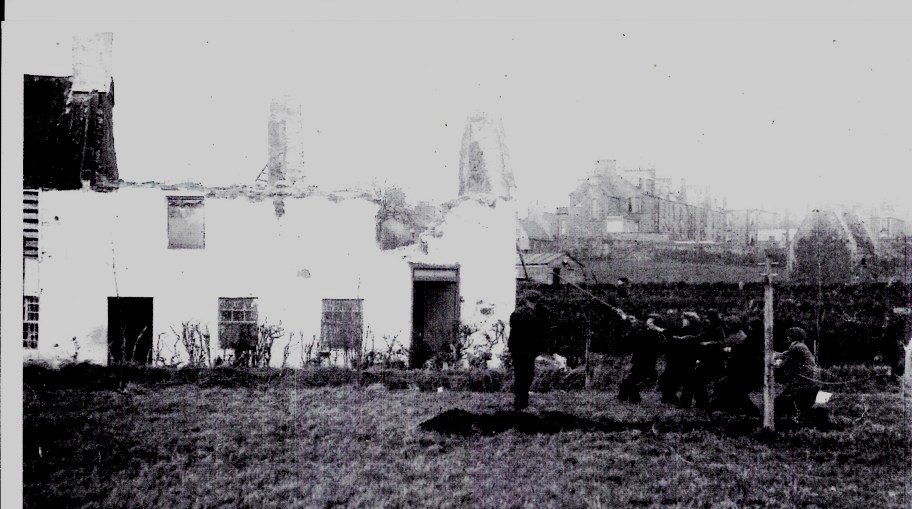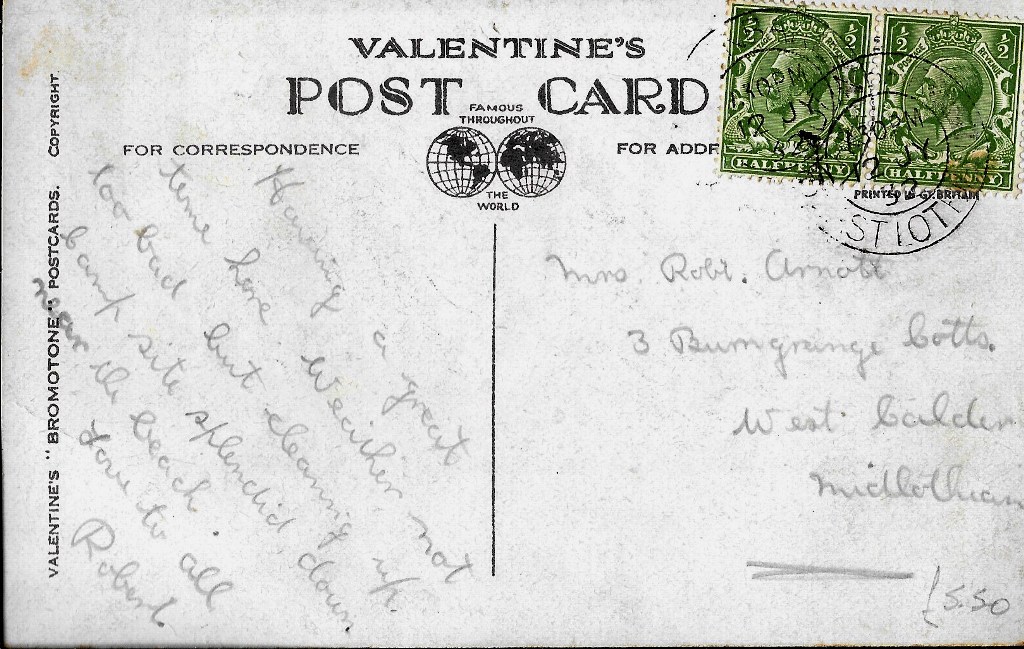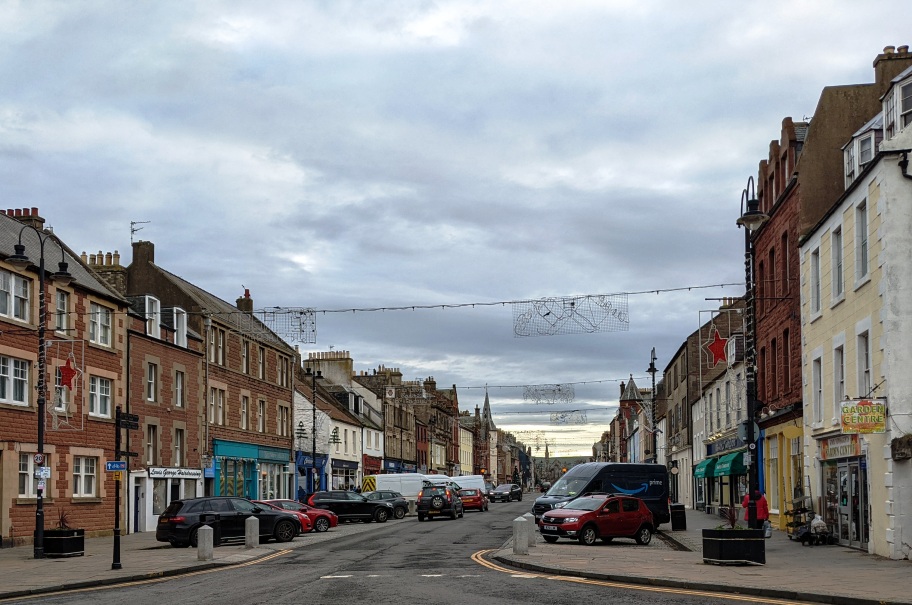Three more old and new views/buildings in Dunbar this month.

According to this site, “Dunbar Cottage Hospital has its origins in the Battery Hospital, a small military hospital which functioned during World War I. At the end of the War local doctors and others decided to utilise the building to found a cottage hospital. Dunbar and District Cottage Hospital opened in July 1919 and continued to operate in the Battery Hospital building until December 1926. Funds were raised to purchase a larger building and in 1927 the Managers acquired Yorke Lodge: the house was altered and opened as a cottage hospital in May 1927. On transfer to the National Health Service in 1948, the hospital became part of East Lothian Hospitals Board of Management. At this time its name was changed to Dunbar Cottage Hospital, and its bed complement was 13”.
The map above shows Yorke Lodge (circled) which later became the Cottage Hospital (name added). The map is from the National Library of Scotland collection. Also on the map is Seafield Cottage, now known as Seafield House, as well as Kirk Hill which stands opposite the Parish Church.

The site of the old Cottage Hospital/Yorke Lodge is now occupied by Lammermuir House care home (photo above), so the nursing/medical use of the site continues.

The photo above shows the wash houses at the Bleachingfield being demolished. Many women had to use wash houses in the early 20th century in Dunbar and other towns and cities in the UK, as there were no facilities in their homes to do large washings of clothes. You can read some people’s memories of wash houses in Scotland here. David Anderson commented “I’ve always assumed they (the wash houses) were built when the bleaching field was laid out in the 18th century, originally for lease to a professional bleacher & his staff. I’ve not looked in the council records to confirm this – but the OS of 1853/4 shows the green is of commercial size. The wash houses were later adapted for domestic use”. Also ” the wash houses’ original water source was the local spring (which was knocked back as source for the mid 19th century water scheme) aka the Lady Well, which was on the site of the garage (now gone)”. The garage was situated on the corner of the main road. David provided another source i.e.
06 January 1781 Tack between Robert Fall, Esq, of Underedge and James Reid, gardiner (sic) in Dunbar “Robert Fall at will with the advice of John Johnston, to plant at will standart (sic) trees in the upper garden … Robert Fall to keep (all) walls in repair… (special clauses) as the pipes of the reservoir to the town’s bleaching field run under the garden (access for repair and terms of compensation by or for James Reid”. The reservoir was above the old Masonic Lodge at Abbeylands – the house on the corner of the road going to the station.

Today, the town end of the Bleachingfield is occupied by the Cooperative Store but the view up to the houses at Friarsbank remains much the same.

The final view this month is of the High Street. While the postcard appears to be dated 12 July 1932, the photograph is not necessarily of the same year. This site estimates that the photograph on the postcard, with the serial number 205.840 (bottom right), was registered in 1928. If you enlarge the photo, you will see the Lido Café on the left hand side, with the newsagents A P Thomson next door. Adjacent to Thomson’s may have been Winter’s grocer shop and next to that Jimmy Law’s hairdresser shop, although they may have come later. On the right hand side, you can see a large sign for Melville Motors. Note the absence of cars on the High Street and the boys in short trousers, nonchalantly chatting in the middle of the street.

This is one of the famous Valentine’s postcards. There is large archive of Valentine’s photography and postcards at the University of St Andrews – “Valentines of Dundee, the well-known photographic company which produced Scottish topographical views from the 1860s, and later became internationally famous as the producers of picture postcards was founded in 1851 by James Valentine (1815-1879)”. The writing on the card reads “Having a great time here. Weather not too bad, but cleaning up campsite splendid (sic) down near the beach. Love to all, Robert”. The weather – “not too bad” may have been mixed for July in Dunbar. There are many more Valentine’s postcards of Dunbar in the DDHS collection and you can also find some by searching for “valentine’s postcards Dunbar” on your chosen search engine. The stamps have the head of George V on them and you can read more about such stamps here.

The photo above looks at today’s High Street – from further down than in the postcard – but most of the shops are obscured with cars and vans. Also, the pavement on the right and left of the photo has encroached on to the road surface. The postcard’s cobbles have been replaced with tarmacadam but many of the buildings on both sides of the street are the same as in the postcard photo.

You must be logged in to post a comment.